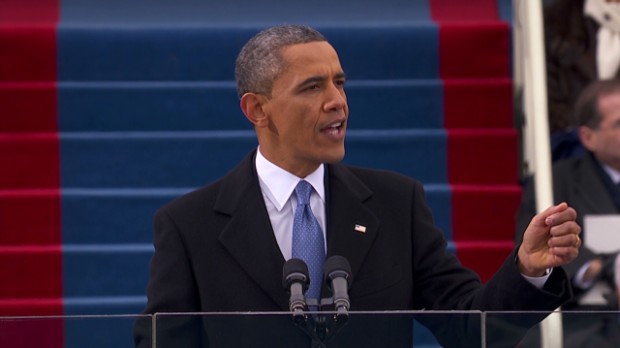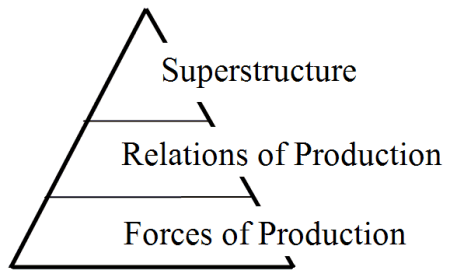“Starting today, we must pick ourselves up, dust ourselves off, and begin again the work of remaking America.” – Barack Obama
“Not wanting to overstate things, but I think we have an opportunity, over the next several years, to change how sports are covered.” – Henry Abbott
The story of the TrueHoop Network is still being written, a work of progress in every sense of the word. Like any good story, it begins with a man, a daunting task, and a series of trials and tribulations.

While more seasoned consumers of the basketball blogosphere are well aware of Henry Abbott—the man who anchors our tale, and the founder of the ubiquitous TrueHoop Network—it is prudent to provide some background information. Henry Abbott, a longtime basketball writer and Portland Trailblazers fan, began TrueHoop in 2005, as a place to write about the things that couldn’t make it into magazine or newspaper articles. In 2007, in an effort to stake some ground in the rapidly expanding sports blogging world, ESPN bought TrueHoop, and Abbott became a salaried staff writer for the company.
On January 20, 2009—literally as Barack Obama was delivering his first inaugural presidential address—Henry Abbott officially launched the TrueHoop Network of basketball blogs on ESPN.com. TrueHoop represented ESPN’s most purposeful foray into the wild world of blog networks, with 15 team-specific blogs, 3 league-wide ones, and the promise of expansion to cover the entire league. The timing was not coincidental. Like the policy agenda that Mr. Obama laid out in the run-up to his election and eventual inauguration, Abbott’s vision for the TrueHoop Network was ambitious. In his vision of the future, Abbott made it clear that synchronicity across multiple websites was his goal, and that the blog network would not privilege any one author or outlet:
In the years to come…these simple kinds of relationships could yield multi-faceted results for readers. Online there is a never-ending stream of more and better ways for clued in people to collaborate and connect. Video, multimedia, audio, things we haven’t even thought of yet … We’re going to have a lot of ways to work together.
With that, Abbott assembled his team of writers who would round out the network. Abbott named longtime Los Angeles Clippers blogger Kevin Arnovitz a co-editor of TrueHoop, and ceded much of the content-generation to him. The squad of writers brought aboard—talented bloggers like Dan Feldman, Matt McHale, Matt Moore, Kurt Helin, Mike Kurylo and more—were impressive, at least in the world of basketball blogging. Additionally, Abbott crafted meaningful relationships with bloggers like Dave Berri and Wayne Winston, stalwarts in the then-fledgling advanced statistics movement. But apart from a flurry of introductions, and the influx of some new voices and methods of analysis (especially with the addition of stat-minded bloggers like Berri, Winston and Kurylo) the TrueHoop Network mostly remained fixed as TrueHoop the blog. The layout of TrueHoop remained the same, with an added drop down menu of TrueHoop Network blogs on the sidebar. The TrueHoop Network still seemed to be primarily Henry Abbott’s (and Kevin Arnovitz’s) blog; its key features (the newspaper-based “First Cup”, as well as a midday “Bullet” list of interesting links) remained constant, and readership grew steadily. Things were growing, certainly, but not really changing.
Before long, however, the TrueHoop Network began to find its footing. What was formerly the TrueHoop blog became a front page, a portal into the rabbit hole that eventually became 30 team-specific blogs. TrueHoop Network blogs themselves became more prominently displayed on the sidebar, and the works of those blogs were regularly highlighted on ESPN.com. Abbott’s posting volume declined as he (presumably) did more editing work behind the scenes, and the writings of other known ESPN writers like Chris Sheridan, David Thorpe, J.A. Adande, Marc Stein, Ric Bucher and Chad Ford—regulars on ESPN’s main page, magazine, and television programs—began to appear. To this day, while there have been some tweaks and interesting ideas (most notably, TrueHoop TV) the model has mostly remained the same.
And that, to us, is disappointing.
***
Perhaps the most compelling feature of the TrueHoop network is its diffuse nature. Indeed, the decentralized nature of the TrueHoop Network, for better or for worse, has always been its most defining trait. TrueHoop, though located on ESPN’s website, exists in many different places; namely, the 30+ blogs that represent the individual nodes of the network. Some of the network blogs are absolutely fantastic, largely because they are given the latitude to continue doing the things that make them so. Additionally, many TrueHoop Network writers have risen through the ranks, and now call basketball blogging something of a career. Abbott and Arnovitz, through their cultivation of editorial talent, promotion of writers on the TrueHoop blog, and ability to connect writers with vast numbers of readers, have been a boon to the wanton internet writer wanting to display their works to the masses.
However, the downside of this hands-off approach is that the editorial staff—in other words, Abbott and Arnovitz—has been unable to ensure a consistent standard of quality across the TrueHoop Network. Each TrueHoop Network blog has a distinct style—some of them quite confusing and distracting—raising a barrier between the reader and the content they seek out across blogs. For example, many of the blogs, rather than having a strong collaborative foundation, are driven by a single individual. Seemingly, this has lead to consistency problems, specifically when life gets in the way of what is, to most, an unpaid hobby. All too often a blogger needs to step away from their project to address another aspect of their life (graduate school, marriage, childbirth, relocation and new jobs are all common reasons). And over time, this is reflected in the number of blogs that are able to participate in the network and consistently produce content. At the time of writing, the network has no Nets or 76ers blog, just changed Hawks blogs, and another hasn’t been updated since before the season began.
Moreover, the hands-off approach isn’t just a structural problem, but a question of content as well. Some of the TrueHoop Network blogs are the very best in the field of sports blogging. 48 Minutes of Hell, The Two Man Game and Hardwood Paroxysm (to cite a few) have long been the standard bearers of basketball blogging, and several others put out quality work daily. But that’s only some of them. To paraphrase Forrest Gump, the TrueHoop Network is like a box of chocolates, you never know what quality you are going to get. With other TrueHoop blogs you get inferior quality to the offerings found on other networks like SBNation and Bleacher Report. The consequences of poor writing are felt across the entire network, as it casts doubt upon the quality of all its blogs: a chain is only as strong as its weakest link and all that.
***
So why are we thinking so hard about the TrueHoop Network, especially now, on the day after inauguration?
The Obama parallel wasn’t included because it serves as a nice quote to begin a story, but because it serves a useful heuristic for thinking about the TrueHoop Network. Assuming you fall politically anywhere left of center, the Obama presidency has been a moderate success. The Affordable Care Act was passed, American involvement in Iraq and Afghanistan is almost finished, and his policies have helped prevent a recession from turning into a depression. But if you look at Obama’s presidency from the heights of his soaring oratory, his legacy is a lot murkier.

The same questions about legacy are applicable to the TrueHoop Network as well. Though it may very well have the ESPN branding, the TrueHoop Network is on the same level as competitive blogging networks like Bleacher Report, FanSided and YardBarker. Each of these sports blogging networks have attempted to advance their goals by partnering with traditional media organizations—CNN, Sports Illustrated and Fox respectively-as a way to expand readership and acquire (free) writing labor. That is not to say all four blog networks are the same, because they’re not. They have different business models, and target and attract different readers. But fundamentally they’re all sports blogging networks, with almost all of the content produced by non-paid writers.
With that in mind, it can be argued that the TrueHoop Network’s big success has been how it has increased the profiles—and professional opportunities—for a select number of individual network writers. Matt Moore now writes for CBS Sports, Kurt Helin for NBC Sports, Beckley Mason for ESPN and the New York Times, Devin Kharpertian for the Brooklyn Game and Rob Mahoney for SI.com, among others. Individual writers have been able to leverage their increased exposure, and association with the ESPN brand, to turn blogging from a hobby into a career. But for every writer that has turned professional, there are hundreds of others who haven’t. This isn’t a criticism of the TrueHoop Network in particular—and who are we to criticize, as we are happily participating in this system—but rather an illustration of how similar it is to the other major blogging networks.
The fundamental truth about sports blogging has remained the same over the last four years: it is much easier to get readers than it is to get dollars. As in any corporation, sports blogging is a pyramid where those at the top benefit from the labor of those at the bottom, and the TrueHoop Network is no different. It is still mainly the province of men (yes, men, almost exclusively) writing and hoping, while a select few rise above.

Now, perhaps it is not fair to criticize the TrueHoop Network for propagating the same blogging labor structure that critics of sites like Huffington Post, Bleacher Report and SBNation find so terrible. Nowhere in Abbott’s inaugural post did he set out to change the blogging world to make sure that every person who thought they could write about sports for the masses would have a (paid) platform to do so. But we would argue that to truly change how sports are covered, one must change the structural underpinnings of those doing the covering. As long as blogging remains mostly within the domain of hobby, not career, any technological or methodological change is merely a singular adaptation, not an evolution.
Of the aforementioned blogging networks, TrueHoop has the best writers, and produces the best content. When we want to read about basketball, it is where we turn to most of the time. Some of its innovations, such as HoopIdea, a campaign to improve basketball that can at least be partially credited with the implementation of the the NBA’s anti-flopping fines, are a welcome breath of fresh air. But was “best of similarly-structured blogging networks” what Abbott and Arnovitz set out to achieve?
***
In retrospect, the form the TrueHoop Network has ultimately taken shouldn’t have come as a surprise. The TrueHoop Network is a subset of ESPN.com’s basketball coverage, which is a subset of ESPN.com, which is a subset of ESPN, which is a subset of the Walt Disney Company. The TrueHoop Network was a promising, if low-risk, way for ESPN to diversify its offerings. It allowed for ESPN to offer different types of content on their site, and, in essence, introduce a new crowd of barely paid labor to attract pageviews. It also enabled ESPN to acquire two valuable assets in the world of basketball journalism. As far as we can tell, to this day, the TrueHoop Network’s only forward-facing employees are still Abbott and Arnovitz.
But like President Obama’s legacy, the TrueHoop Network is still growing. Blog networks are an ever-changing form of journalism, and to make any sort of final pronouncement at this time would be foolish. In the next edition of Monday Media, we’ll take a look at the future of the TrueHoop Network.
Editor’s Note: Part two has now been written, and can be found here.


